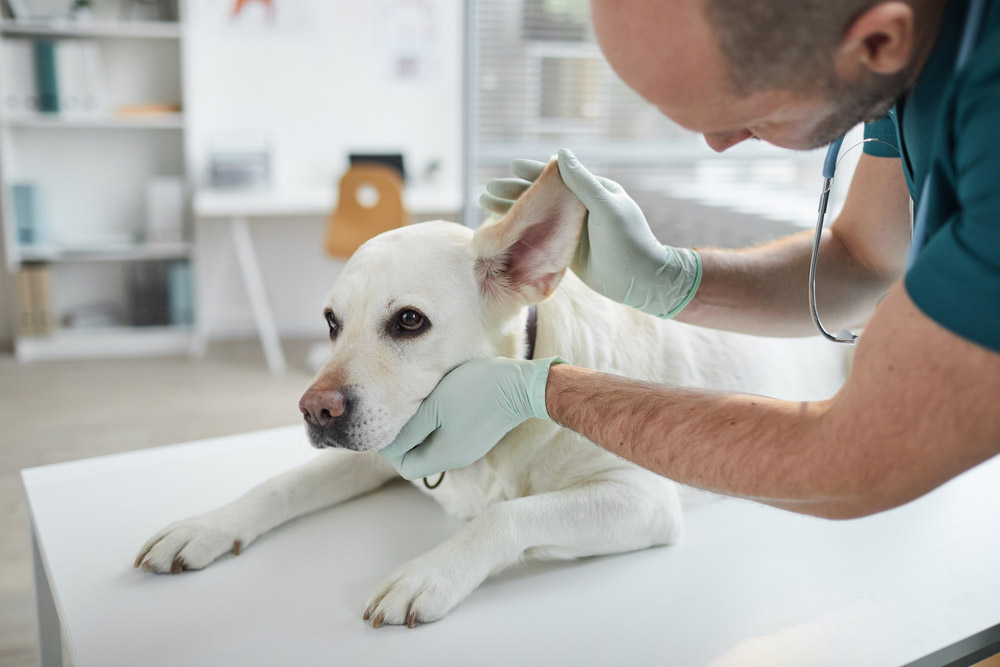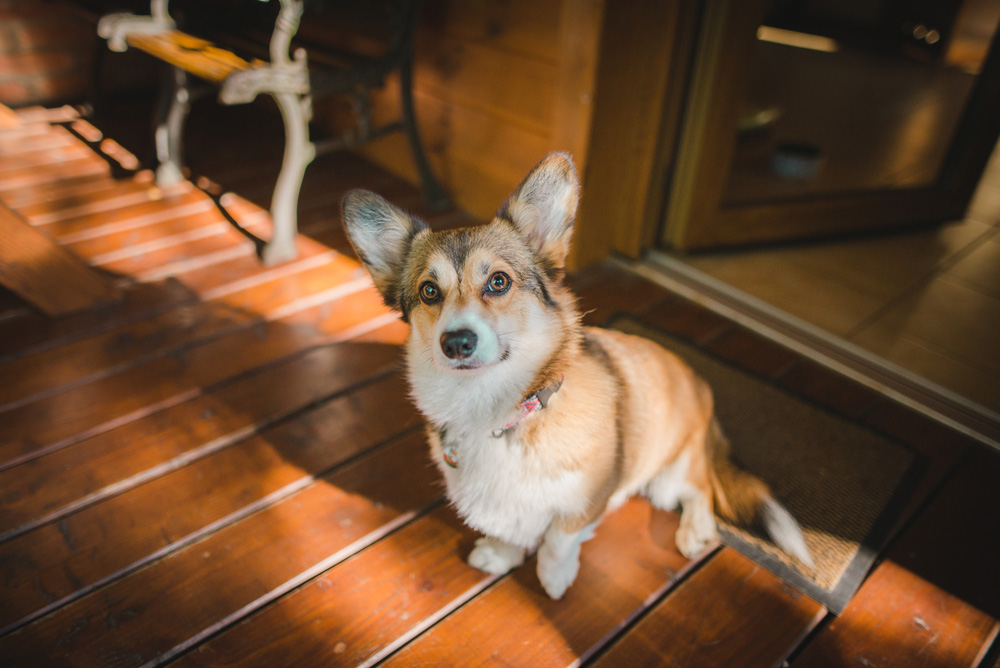
All dogs have their quirks, some of which bring a smile to our faces and some make us concerned about a medical issue. One of those quirks, or differences in behavior is walking sideways.
Some reasons for this sideways walk are benign and not of concern. It could also be a one-off occurrence. However, other causes are worth further investigation since side-walking may be a sign of a medical issue. Of course, you should discuss any abrupt behavioral change with your vet, particularly if you detect any other red flags, such as loss of appetite, lethargy, confusion, incoordination, or weakness.

The 10 Potential Reasons Your Dog Is Walking Sideways
1. Avoidance
Some dogs may walk sideways simply to avoid something. It could be another pet or a person in their way, or your pup may do this to steer clear of a new object in your home. Some dogs may even react strangely to a new surface. We’ve known some pets to walk sideways when walking on tile if they haven’t felt it under their feet before. Pay attention to any patterns you see with your pooch’s walking, as this could help you discover the reason behind this behavior.

2. Developmental Issue
Some dogs may have an odd gait because of a developmental issue or previous injury. These animals probably won’t show any other signs of distress or discomfort because they’re used to how they navigate their world. Again, you shouldn’t see anything else unusual besides a funny walk. This is just how they are, and they shouldn’t have any other problems getting around your home.
3. Anatomy
Growing puppies may walk sideways out of sheer clumsiness and trying to not trip over their own feet. It’s normal for a dog to take some time to get accustomed to their growing body, not unlike a growing teenager. You may see this trait more often in large and giant breeds like Great Danes or Irish Wolfhounds.

4. Anal Gland Problem
A dog may have an unnatural gait if it’s painful to get around normally. An anal gland problem is one cause of a change in locomotion as walking may aggravate their condition. Your pet may step carefully, going sideways or even turning circles to avoid the discomfort.
5. Injury
An injury may also affect your pet’s walk. It could be anything from a torn nail to a pulled muscle. Remember that your pet still has wild instincts to keep moving to keep from showing their vulnerability if hurt.

6. Ear Infection
An ear infection may seem like an unlikely cause for side-walking, however, the function of the inner ear also involves balance. What you may observe isn’t side-walking but your dog having trouble with balance and falling to the side. Other signs include excessive head shaking and pawing at their ears.
7. Vestibular Disease
Vestibular disease is an issue affecting the middle or inner ear. Many things can cause these issues, including an ear infection, hypothyroidism and trauma. Older dogs are more susceptible. Your pet’s treatment depends on the problem. Your vet will begin with a medical history, followed by bloodwork and possibly imaging. The prognosis is good if detected early and treated.

8. Hip Dysplasia or Other Joint Issues
Large breed dogs have a greater risk of developing hip or elbow dysplasia, which can affect their locomotion, giving them an unnatural gait. Surprisingly, the age of neutering or spaying can increase a dog’s chances of developing joint issues. We recommend discussing the risks and benefits of the procedure on your pet’s quality of life with your vet.
9. Neurological Problem
Neurological problems can cause sudden changes, including the way your dog walks. You may notice other signs, such as head tilting, lack of coordination, and stumbling. Pay attention to how your dog walks and other red flags, which can help your vet diagnose the issue. Many ailments have genetic causes, which can affect their onset.

10. Stroke
Canines can also suffer from strokes. The telltale signs are often the same as in humans, including weakness on one side. That may make a dog walk sideways favoring their strong side. Signs often occur suddenly, making prompt veterinary care imperative. You may even notice confusion or a loss of balance in your pet.

Other Factors
Of course, our article isn’t an exhaustive list. Walking sideways isn’t diagnostic of itself. That’s why noting other signs is essential. Any abrupt deviation from normal behavior is worth investigating. It’s better to seek prompt treatment than ignore the red flags.

Conclusion
A dog walking sideways isn’t always a cause for concern. It could be a reaction to something different in their world. That’s particularly true with pets that haven’t been exposed to novel situations. Avoidance is a normal reaction. However, this sign can also point to medical problems requiring veterinary intervention. Nevertheless, caution is an excellent policy.
Featured Image Credit: Burin P, Shutterstock

